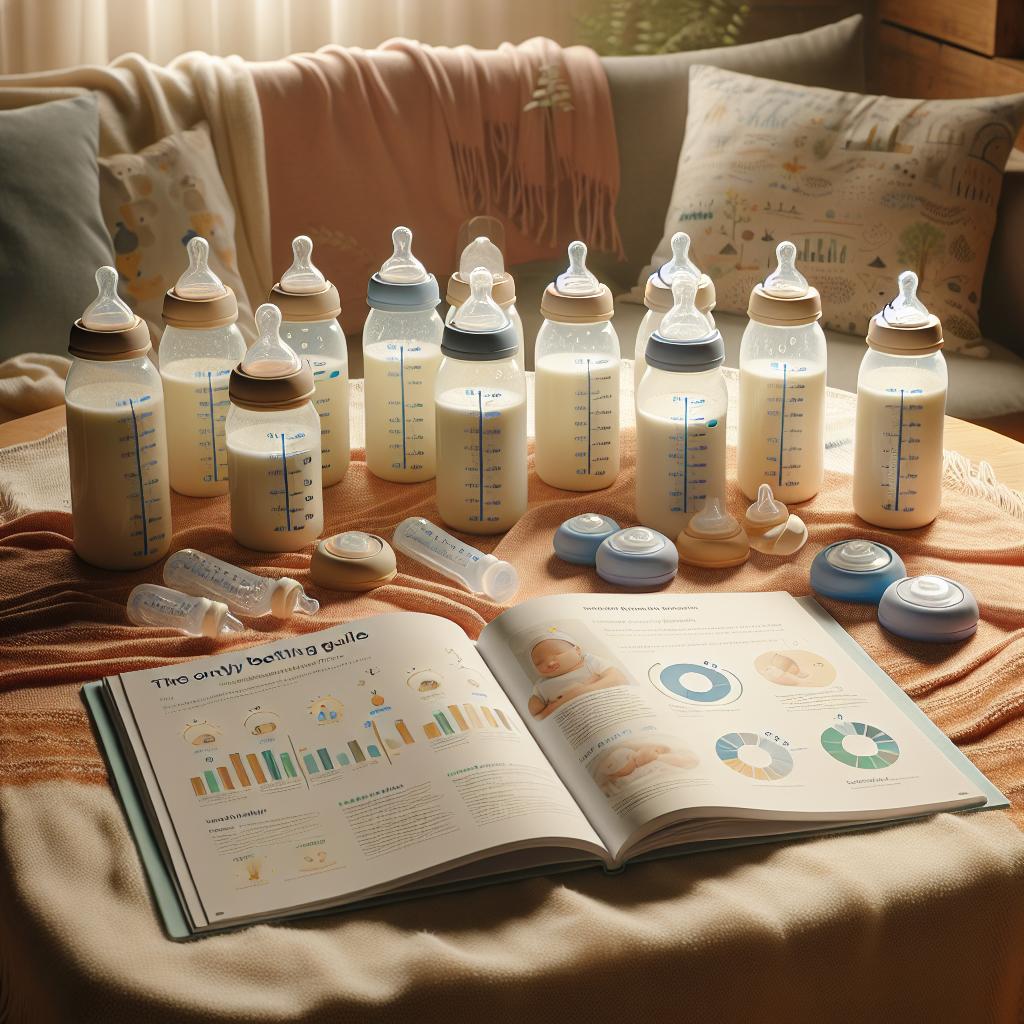What is Biomimetic Feeding?
In the realm of baby care, one concept gaining increased attention is that of biomimetic feeding. By definition, biomimetic means to imitate or emulate natural processes. As such, biomimetic feeding in baby care is about mimicking the natural processes of breast milk feeding. This approach aims to preserve the intricate balance of nutrients, lipids, carbohydrates, and proteins that make breast milk the ideal food for newborns.
The Science Behind Biomimetic Feeding
Research demonstrates that different types of milk have varying compositions of nutrients, differing even between species. Subsequently, the way a baby receives these nutrients can also differ. For instance, natural breastfeeding is an interactive process, wherein the baby’s suckling behavior influences the flow of milk. The milk flow can change during the feeding session based on the baby’s need. This dynamic interaction is challenging to replicate with standard baby bottles.
However, recent studies underline the significant advances in creating products for biomimetic feeding. Baby bottles like the Emulait Classic Baby Bottle, for example, are designed to emulate the natural feeding process as closely as possible. These baby bottles take into account elements like flow rate, the balance of nutrients, and even the baby’s suckling behavior.
Importance of Biomimetic Feeding
Biomimetic feeding offers several benefits, crucial among them being:
- Nutrient-rich feeding: By imitating natural breast milk, biomimetic baby bottles ensure the baby receives all the essential nutrients in the right proportions.
- Comfort for the baby: Since biomimetic feeding emulates natural breastfeeding, it’s more comfortable for the baby, leading to reduced feeding issues.
- Baby-led feeding: Because biomimetic feeding imitates the dynamic interaction of breastfeeding, it allows the baby to control the feeding pace. This approach prevents overfeeding and can help in understanding baby cues better.
Embracing Biomimetic Feeding
Adopting biomimetic feeding as part of your baby care routine does require a strong understanding and a bit of patience as your baby adjusts to these new methods. It’s essential to remember that every baby is different and might take their own time adjusting to biomimetic feeding methods.
Modern baby tech gadgets are making it easier for parents to adopt biomimetic feeding. For instance, the Emulait Classic Baby Bottle, featured on both Emulait’s official website and Bottle Wizard’s list of essential baby products, is designed to encourage biomimetic feeding.
As new parents, understanding the intricacies of biomimetic feeding is a major step towards providing your baby with the best care possible. Stay informed, research thoroughly, and you will navigate the beautiful journey of parenthood with confidence and ease.
It’s natural to start breastfeeding immediately after giving birth. So, transitioning to a biomimetic feeding system might seem daunting at first. However, numerous studies suggest that the process can be smoother than anticipated. These studies indicate that the transition is often easier if the biomimetic feeding practice is initiated as early as possible in the baby’s life.
Remember that your baby would need time to adjust to the changes, and that’s okay. It’s essential to stay patient and committed to the process. It might also be helpful to observe and understand any changes in your baby’s feeding pattern and adjust accordingly.
Signs of Proper Biomimetic Feeding
Effective biomimetic feeding could be quickly identified by observing your baby’s behavior. Some indicators of proper biomimetic feeding include:
- Consistent weight gain: If your baby is gaining weight consistently, it’s a positive sign that they are receiving an appropriate amount of nutrients.
- Pacing of Feeding: The baby takes natural pauses during feeding, just as they would in the natural process of breastfeeding. Babies should not be swallowing air or getting exhausted when feeding.
- Active and alert: After a well-fed session, your baby should appear active and alert.
Additional Biomimetic Feeding Resources
If you’re feeling overwhelmed by the transition to biomimetic feeding, remember you’re not alone. There are many resources available to guide and support you throughout this journey. It’s highly recommended to utilize these resources to ensure you’re well-informed about biomimetic feeding practices.
Some informative and reputable sites for new parents are:
- MDPI’s scientific article detailing the benefits and challenges associated with the biomimetic approach to feeding. It includes valuable insights from experts in the field.
- PubMed is another excellent source for research-based knowledge on various baby care topics, including biomimetic feeding.
For visual content, the Emulait Instagram page regularly shares insightful posts regarding biomimetic feeding and more. It’s a refreshing way to learn and stay updated about the benefits and techniques of biomimetic feeding.
Building a Better Future with Biomimetic Feeding
Change is often hard, but evolution is essential for progress. Biomimetic feeding represents an advancement in baby care, thanks to growing technology and scientific knowledge. Embracing this concept could result in healthier, happier babies and a smoother transition for parents.
Keep learning, remain patient, and trust in this process. Undoubtedly, as a parent, your inherent instinct is to provide the best possible care for your baby. Biomimetic feeding aligns with this principle, ensuring your little one thrives under your nurturing care.
Biomimetic feeding – the amalgamation of nature and technology for the well-being of your precious one.







